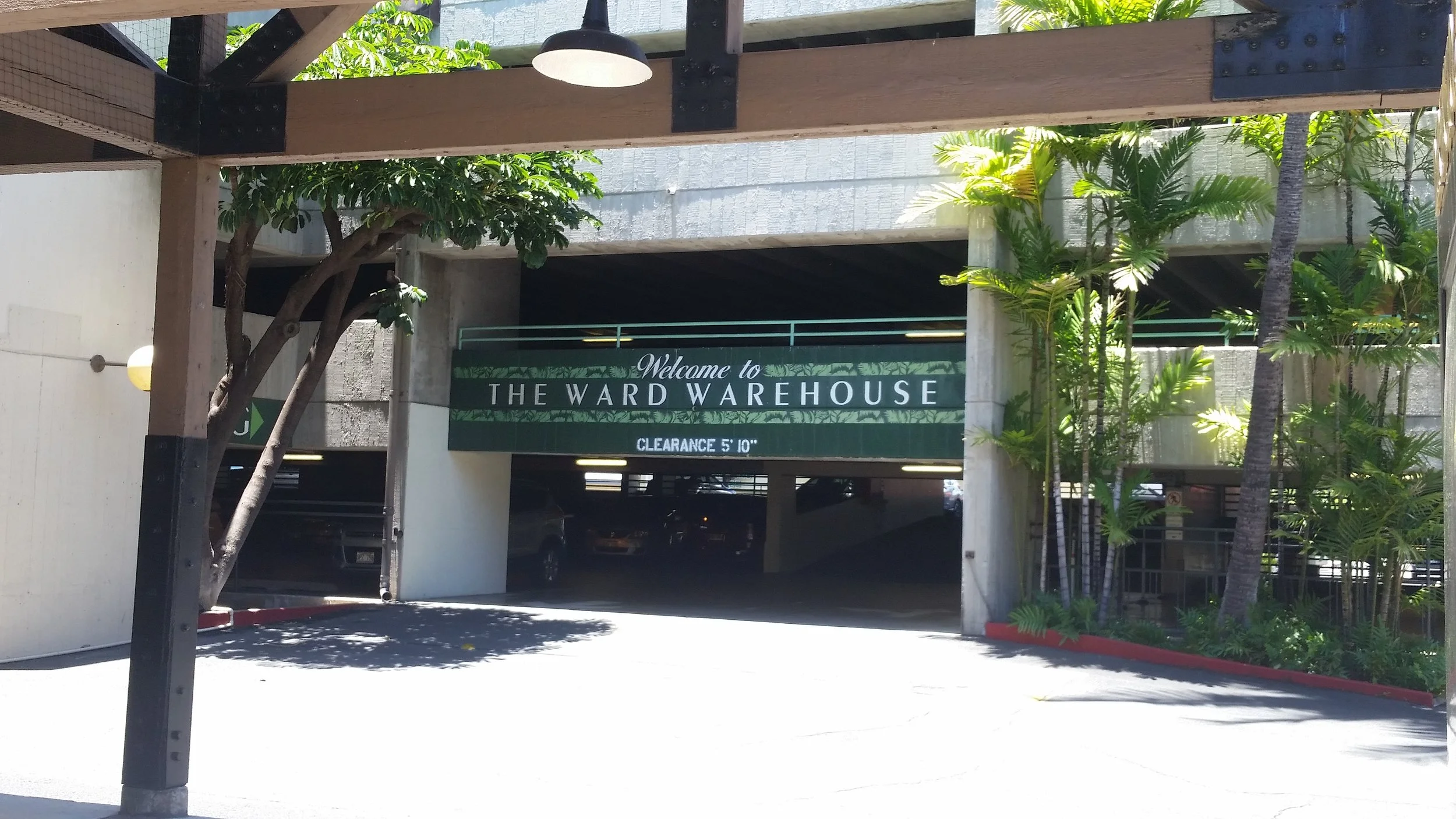Ward Warehouse
Ward Warehouse is a place committed to living. The exposed wooden beams and visible metal brackets of the shopping center structure are a reminder that this place was never meant to serve the community for 40 years. This space was meant to be temporary. Already it has outlasted its life expectancy.
The beige-painted two-story open-air shopping center is unremarkable amidst the ever-multiplying mirror-windowed tower condominiums that line Ala Moana Boulevard. The squat three-level parking structure faces Kewalo Basin, a departure location for water activity tours. This plain facade makes Ward Warehouse almost invisible to island visitors boarding their snorkeling catamarans and deep sea fishing charters across the street.
I walk down the length of the shopping center, past vacant shop spaces and signs announcing “Store Closing.” Most of the stores have already closed, but the few that have decided to remain open until July 31 stay fully stocked, optimistic despite the shopping center’s imminent expiration date of August 1.
Since learning of Ward Warehouse’s fate, I have made an effort to visit the shopping center every few days. Every few days I try to notice what was here before that is absent now. I expect to witness the slow death of this familiar shopping center. Instead during each visit I discover something new: a new arrival of books at the Native Knowledge store, a freshly painted community mural, an art studio occupying a recently vacated shop.
Today I am attending the Pua Culture class hosted by Nā Mea Hawai’i, "a space for cultural exchange, education, and local goods." I make my way towards the end of Ward Warehouse to “where the Old Spaghetti Factory used to be,” down near “the old Nā Mea Bookstore.” These types of directions are in the local style: directions for the present make reference to knowledge of the past. I wonder how Ward Warehouse will continue to live in future local conversations-- “Meet me at Kewalo Basin, next to old Fisherman’s Wharf, across from old Ward Warehouse.”
Today the Pua Culture class is meeting in the walkway, somewhere between the vibrant Nā Mea Hawai’i storefront and “old Nā Mea,” the Nohea Gallery. Between the present and the past, I join the class at a long table covered with flowers and ferns. Nine women are already chatting, gathered around the foliage to trim the stems and sort da kine. I do not know the names of the flowers--I will later learn to identify ti leaves, bougainvillea, lace fern, and more. The women welcome me by handing me a pair of scissors. “Like this,” they show me how to trim the stems so that we can use them for haku lei, a style of lei created by wrapping flowers together. As the one mound of foliage becomes many piles sorted by variety and color, we take our seats around the long table.
Aunty opens the class, “Pua means flower. Flowers are healing.”
Special thanks to Nā Mea Hawai’i
Update: Nā Mea Hawaii has reopened at its new location: “the old Brookstone.”


